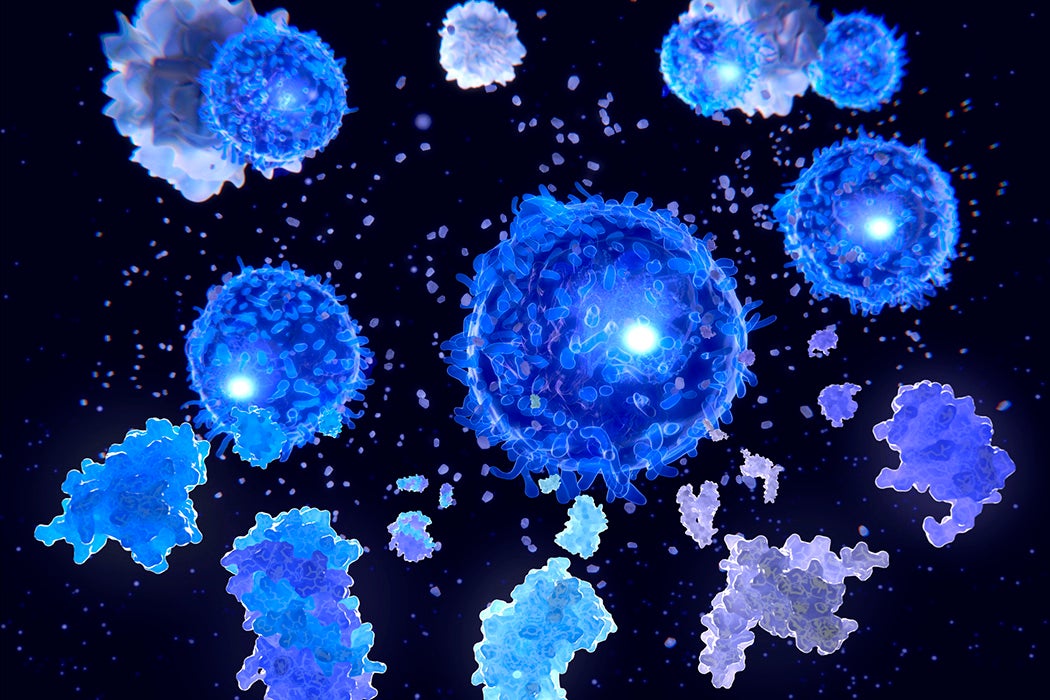In John M. Barry’s book on the 1918 flu pandemic, The Great Influenza, one of the most striking passages concerns what actually killed many of the young, healthy victims of the infection, causing them to turn blue and bleed from the nose or ears:
The virus was often so efficient at invading the lungs that the immune system had to mount a massive response to it. What was killing young adults a few days after the first symptom was not the virus. The killer was the massive immune response itself.
The phenomenon Barry describes is the cytokine storm, or cytokine release syndrome—when a body’s natural defenses are called into action and are so overwhelming and destructive that instead of rescuing the sick, they cause their death.
Cytokines are small signaling proteins, which can be grouped by their origins, structural characteristics, effects on the body, and signaling pathways. Each type has a corresponding receptor on the cell surface and, once received, can start one of a number of cellular tasks that begin a cascade of responses, depending on type.
Microbial infections are not the only cause of these storms; a more familiar one is graft versus host disease, which can occur in people who receive organ, bone-marrow, or stem-cell transplants. The donor organ detects an “invader” (the new body) and masses an immune response to stop the threat, which endangers both the transplanted organ and the recipient. People who receive organ transplants are often given steroids and immunosuppressors to prevent and/or counteract these responses.
Weekly Newsletter
Cytokine release syndrome has been reported in some COVID-19 patients, particularly young ones. Unlike other viruses and causes, COVID-19-associated cytokine storms do not appear to inflict severe liver damage. Conversely, the damage to the lungs from the disease is much greater, which may be due to the localization of the virus to those of the lower respiratory tract. Patients’ kidneys may also be damaged, which accounts for the reporting of acute shortages of dialysis machines for those with already existing renal issues.
The tools available to medicine in 2020 were only at best theoretical in 1918. The lethality of COVID-19 is overwhelming, and the list of complications to infection continues to grow as more cases are seen. The lessons of the influenza pandemic are aiding health care today, and the ability to intervene in cytokine storms early may be saving lives this time.







